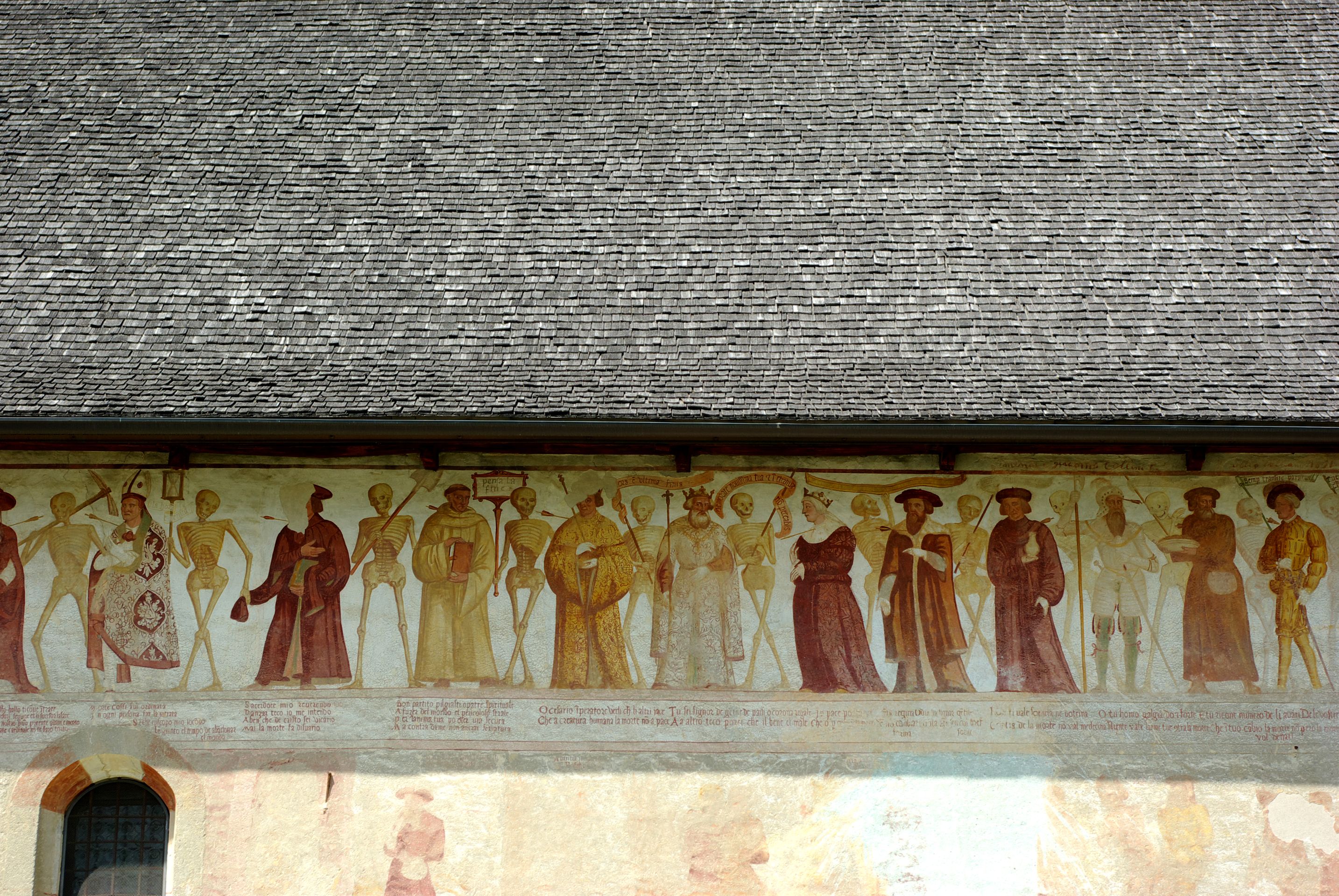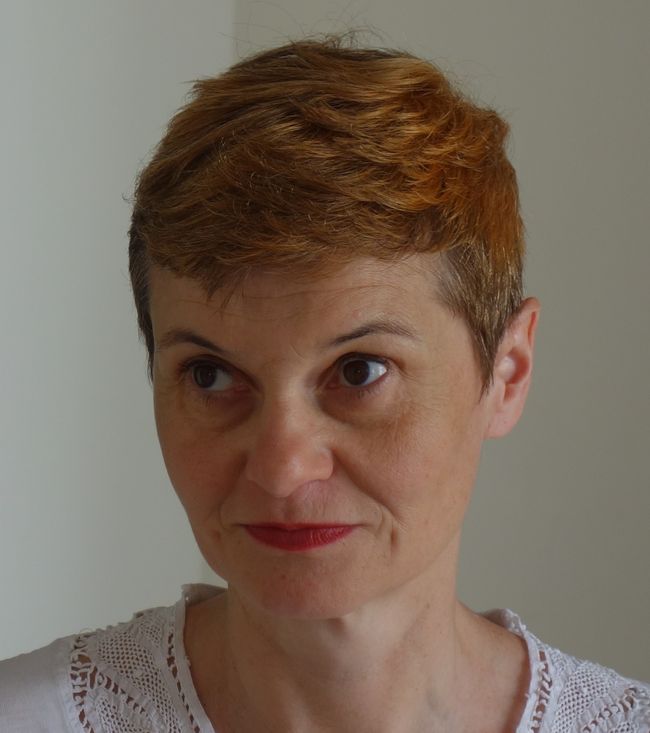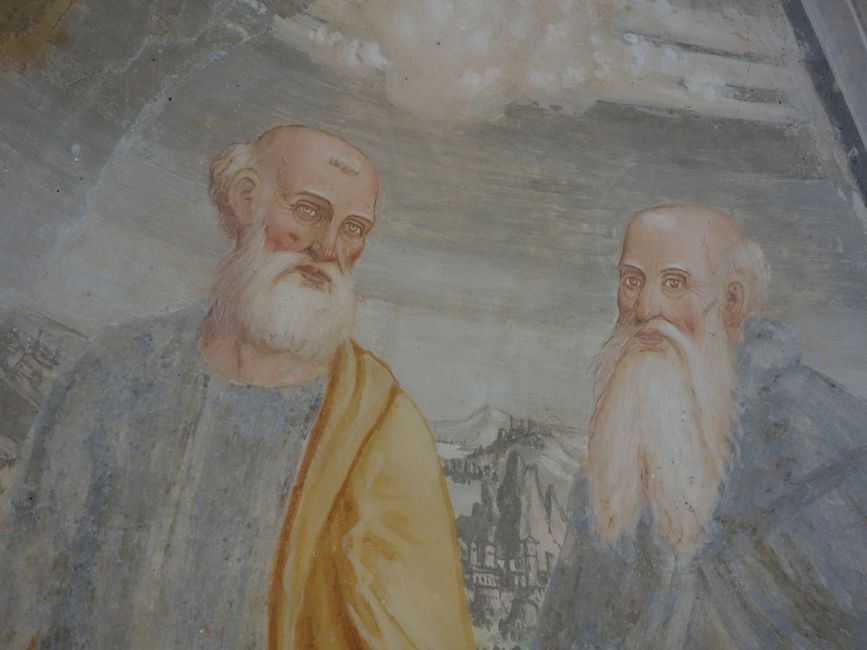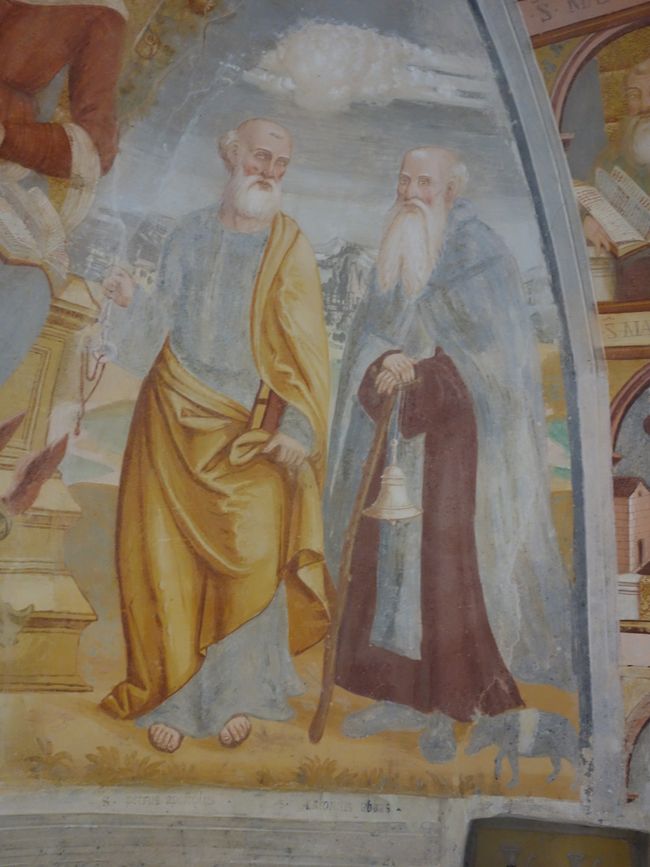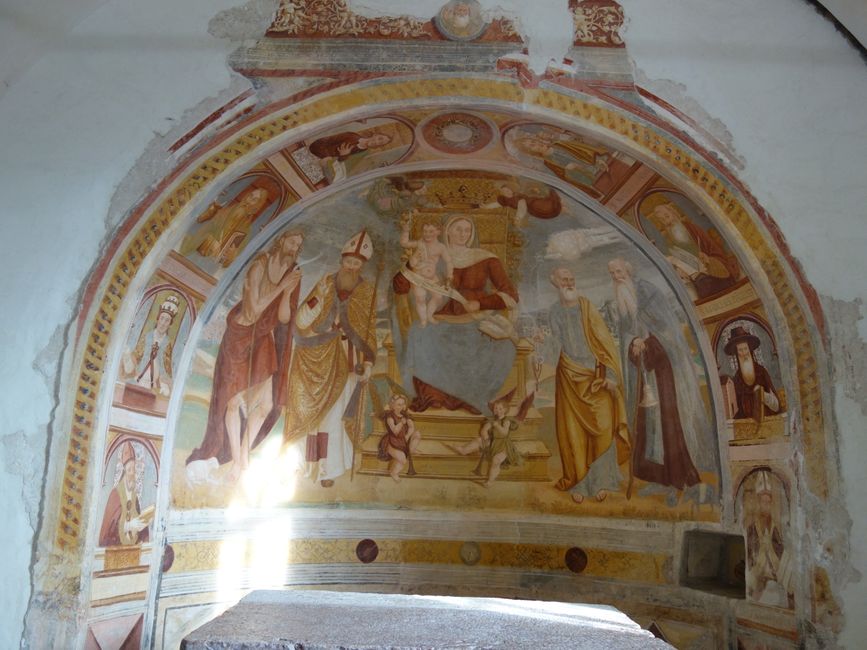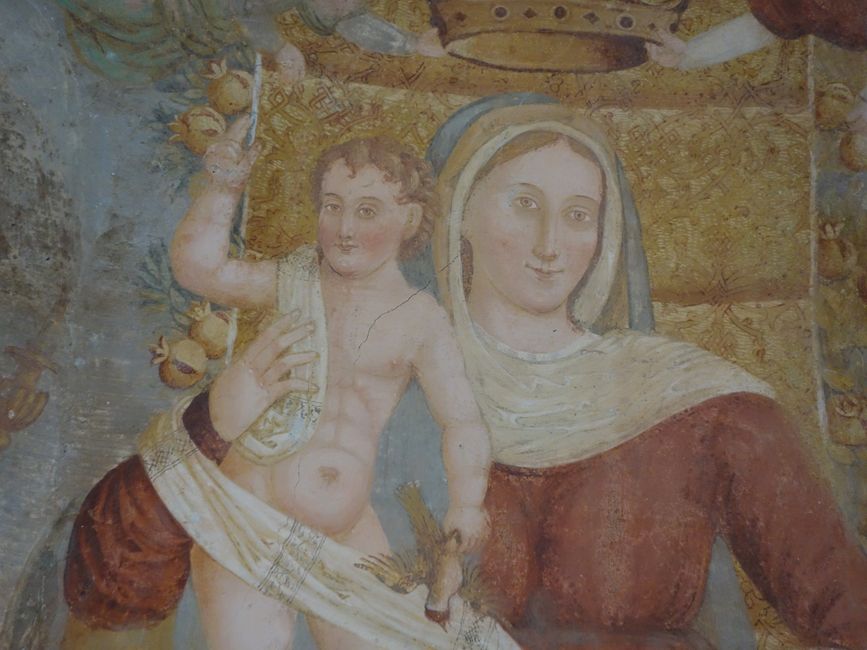The saint who protects against shingles
Pubblicato: 09.10.2020
Iscriviti alla Newsletter
I have a great weakness for frescoes, not so much because they are historically significant, but because they are like the precursors of our comics - and they don't rely on text. The contemporaries of the painters (yes, they were all men back then) could read the images on the walls of the churches (that's where they usually are) even if they couldn't read. Here in the Trentino mountains, this may have been even more important for the rural population than in the cities of Tuscany, for example.
All the saints could be easily recognized by their attributes, just like in the first of our Baschenis churches, which is also the last one, namely the last one that the family of painters decorated here in Trentino. I'll tell you more about the family history later, but for now, here's what you need to know: There are two branches, both from the area around Bergamo, who worked as itinerant painters. They first came here in the early 15th century, and then returned over the next 150 years to decorate numerous village churches. Simone II Baschenis painted the apse in Sant'Udalrico in Vigo Cavedine: Of course, you can see the Madonna with the child Jesus, and to her right are Peter (with the key) and Anthony the Abbot (with a bell, pig, and staff). Anthony the Abbot was important for the farmers because he was the patron saint of animals (that's the pig!), and he also protected people from the painful shingles (in Italian: fuoco di Sant'Antonio).
What I wonder is: Why is the baby Jesus tearing apart a bird? Maybe it's the Holy Spirit? That would be sacrilegious. The people of the 16th century probably understood it.
Iscriviti alla Newsletter
Risposta
